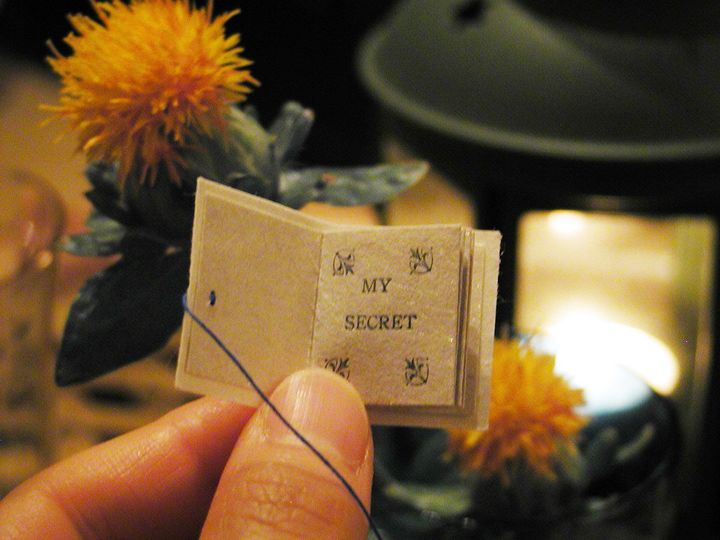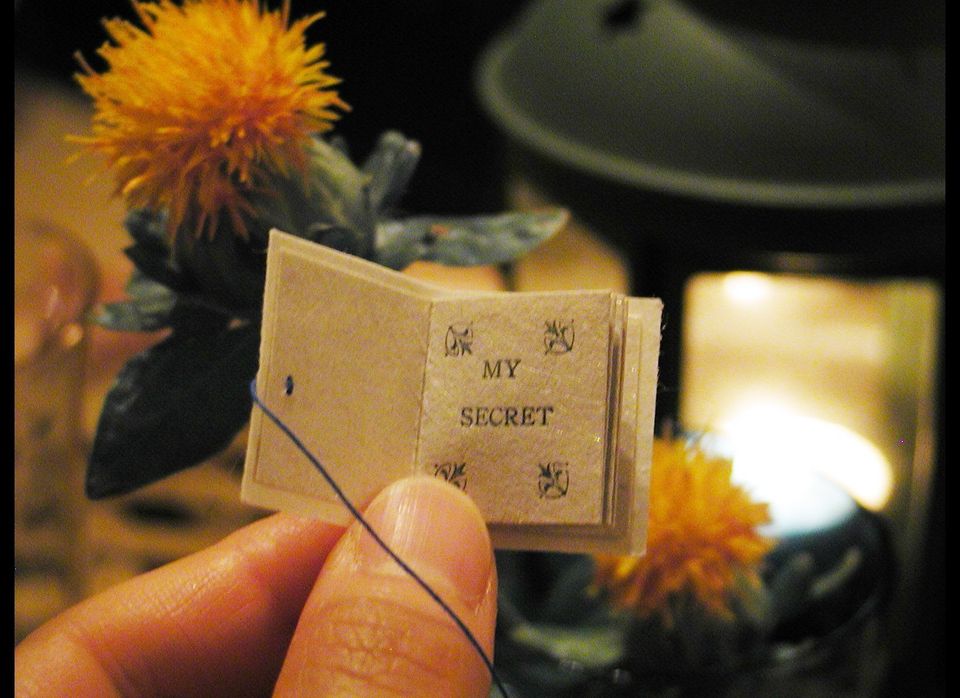
If you spend a little time on Etsy, you’re bound to come across a handmade book, smaller than a beer coaster, lovingly printed with pictures and maybe even a few words. If you spend a lot of time on Etsy, you’re bound to find hundreds of these books. Then there’s Sarah Morean, who writes a regular column for IndieReader, “Mini Fete”, devoted to tiny comics. So it would seem, as these curios go, we’re in the midst of a renaissance of sorts. If only it weren’t for the sense that phrases like “in the midst of” and “renaissance of sorts” are words running counter to the refreshingly unpretentious quality that defines this unusual format — the miniature book.
Yet, with each new miniature book I see, the immediate impression it makes upon me — wonder, instant adoration, and a sort of underdog’s empathy, as if it were a sickly baby bird that has just entered the world prematurely — seems to grow stronger. Their force doesn’t numb, as with most fads. Individually, these books might offer content as quaint as a collection of cat drawings or a forgotten Christmas carol.
But collectively, they say something very important about where we are as book lovers in 2012.
Now, before we get ahead of ourselves, I should mention that, when wading into the world of miniature books, the first problem one bumps into again and again is the centuries old dispute of what a miniature book actually is. The Miniature Books Society, a non-profit organization that for almost 30 years has sought to sustain “an interest in all phases of miniature books”, notes the global differences in what constitutes a miniature book. In the United States, the standard is three inches in height, width, or thickness.
Outside the States, aficionados are more likely to give an additional inch, making the cut-off in many parts of Europe and Asia four inches.
Because miniature books have historically been a collectors’ past-time, such questions can really, really matter. But they won’t here — not in this column. Let’s content ourselves with setting this general guideline: any book impressing upon us a general feeling of “wow! that’s stunning and adorable” passes go. Okay? Done!
Our definition conveniently brings us to Miyako Akai, whose work tends more toward “stunning” than it does “adorable”. Akai is one of the world’s foremost makers of miniature books. She also has a deep understanding of an impressive variety of book-making techniques, as demonstrated in her 2009 how-to guide, The ABCs of Making Miniature Books.
Akai’s books draw together several strands of historical tendencies in miniature bookmaking. The first are the technical boundaries they push. The modern history of miniature books begins in the nineteenth century with advances in printing technology, such as the advent of photoreduction and photolithography. Today, Akai’s books are made possible by using delicately precise laser technology to set the impossibly fine text the author uses in her stories and poems. So, at the level of scientific application, nothing much has changed in the world of tiny print. Sometimes Akai’s Kanji can fill a three-inch by three-inch page with up to 100 characters, readable only with the aid of a magnifying glass. The tweeness of her frail and secretive gardens belies their industrial might.
Then there’s the matter of what goes into Akai’s books. While her text is usually original and can range from poetry to short novels, she has on occasion reprinted classical texts. This has always been the most common use for miniature printing. In the Victorian Age, the time generally agreed upon as the miniature book’s heyday, the tiny volumes often reprinted children’s poetry, Sherlock Holmes novels, and, as can always be expected when we speak of publishing fads, foundational religious texts like the Bible and the Talmud. Akai’s own reprints have consisted of twentieth century free verse haiku poets, like Sentoka Taneda and Hosai Ozaki. When considered within the context of Akai’s own work — which exudes an avant-garde spirit drifting through a body of craft and tradition — we can view these daring poets as providing the foundational texts for Akai’s own aesthetic.
Returning to Etsy, you’ll find most the miniature books on offer don’t share Akai’s strong ties to the art’s past. They tend to be far more ‘zine-y, far less tactile and unique as stand alone art objects. But they impress with their ubiquity. The fact this petite format is where so many twenty-first century crafty minds have wandered says less about where we’re at with the artistry and more about where we are as readers and consumers of books.
The miniature book boom smacks in the face of recent publishing trends. Nothing can be further from the sensory experience one gets from a Kindle than opening a three-inch pamphlet containing four recipes for Pi or a book the size of a gum eraser collecting a series of hundred year-old prints of birds and their nests. It’s a declaration of sorts, this burst of miniature book-making. It says: our eyes might have strayed to the brighter lights of iPads and Nooks.
But print is here to stay. Our fingers demand it.
Andrew Stout is a writer. His journalism has appeared in The Economist, Vanity Fair, The Atlantic online, and The Village Voice, among other publications. He is working on a book about humor in art and design as well as a dictionary of love clichés.
Read more at indiereader.com
